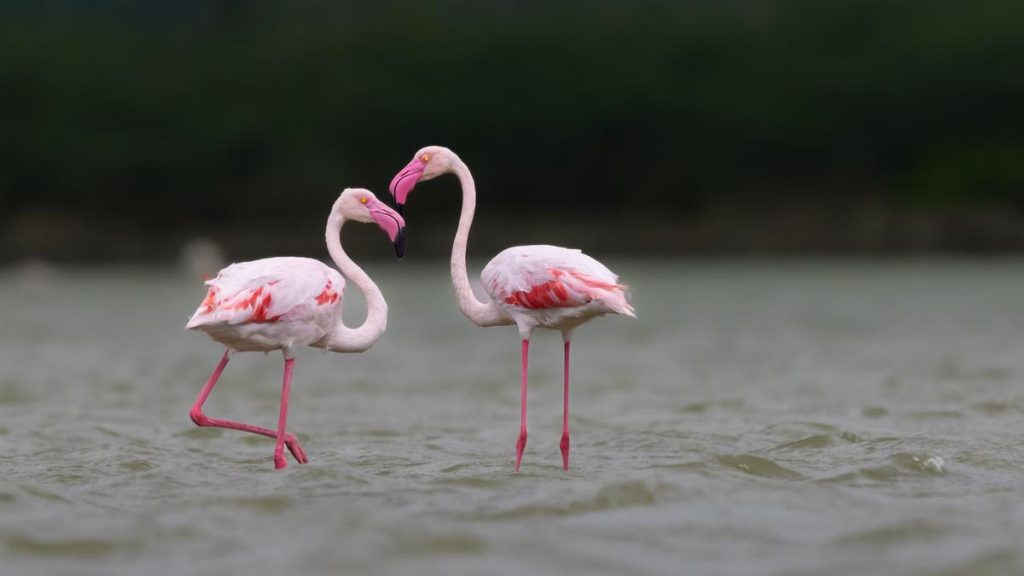It’s that time of the year when forested areas are aflutter with the high-pitched sounds of the wispy little greenish warbler and the guttural teek teek of the Indian blue robin. One can also catch a glimpse of brown shrike that comes from Japan, the blue-tailed bee eater from Europe and Russia, as well as birds like Indian pita and paradise flycatcher that come from the Himalayas.
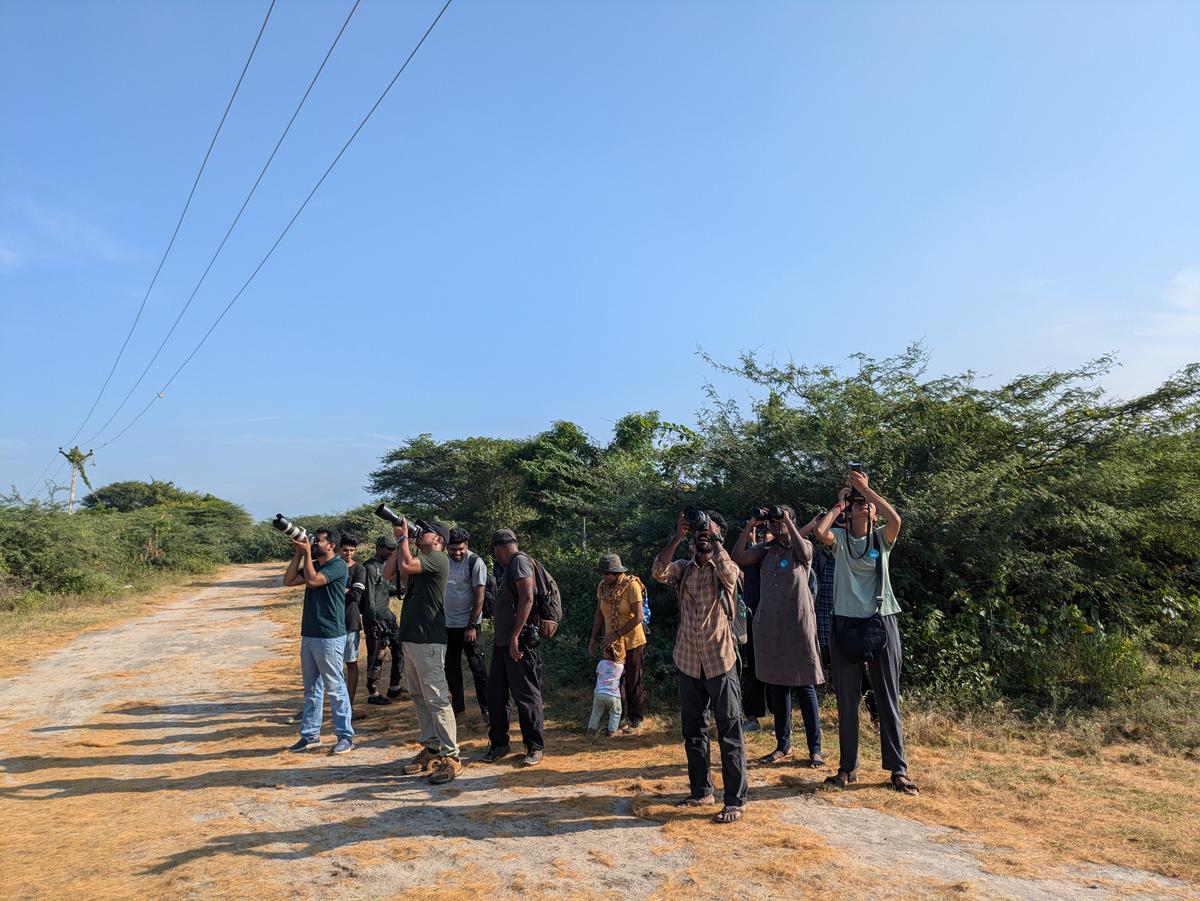
Bird watching in action
| Photo Credit:
Vinod Sadhasivan
As many as 300 plus bird species have been documented across Tamil Nadu during the Pongal Bird Count coordinated by the Tamil Birders Network and Bird Count India. The data provides information on the distribution and abundance of the birds of Tamil Nadu.

This year, copious rains filled wetlands in Coimbatore and in neighbouring districts. Birders documented a decline in numbers of migratory birds and this has been attributed to many reasons including rains and unscientific de-silting of water bodies that wiped off natural vegetation from the bunds. Another concern is untreated sewage being let in. However, a handful of birders have documented unusual sightings.

K Selvaganesh, Coimbatore
Government High School teacher, Sugunapuram
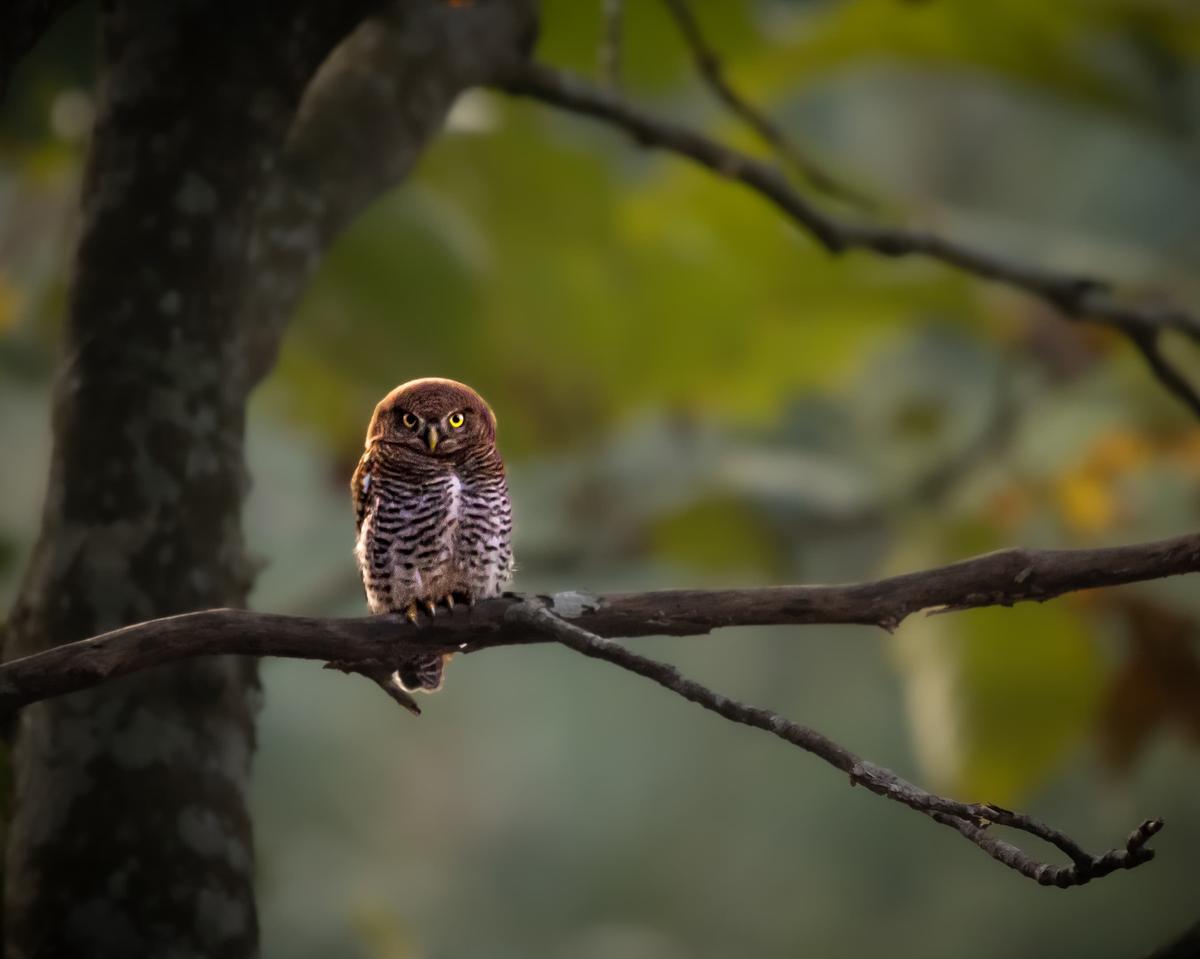
jungle owlet
| Photo Credit:
Vinod Sadhasivan
An active participant in birding every year, he covered as many as six districts including Pudukottai, Sivaganga, Madurai, Tiruppur, Ramanathapuram, Coimbatore, and Dindigul over four days. “In Coimbatore, 30 birders took part, while across Tamil Nadu, the number was over 300. At Ponnuthu, a birding hotspot, we recorded 45 species during a bird walk. And 60 species at Perur lake,” he says. However, there was a decline in the number of migratory ducks like garganeys because of copious water in the lakes. He was lucky enough to spot the brown-breasted flycatcher at Ponnuthu.

Surendhar Boopalan, Puducherry
Government school teacher & co-ordinator of Puducherry Birders Network
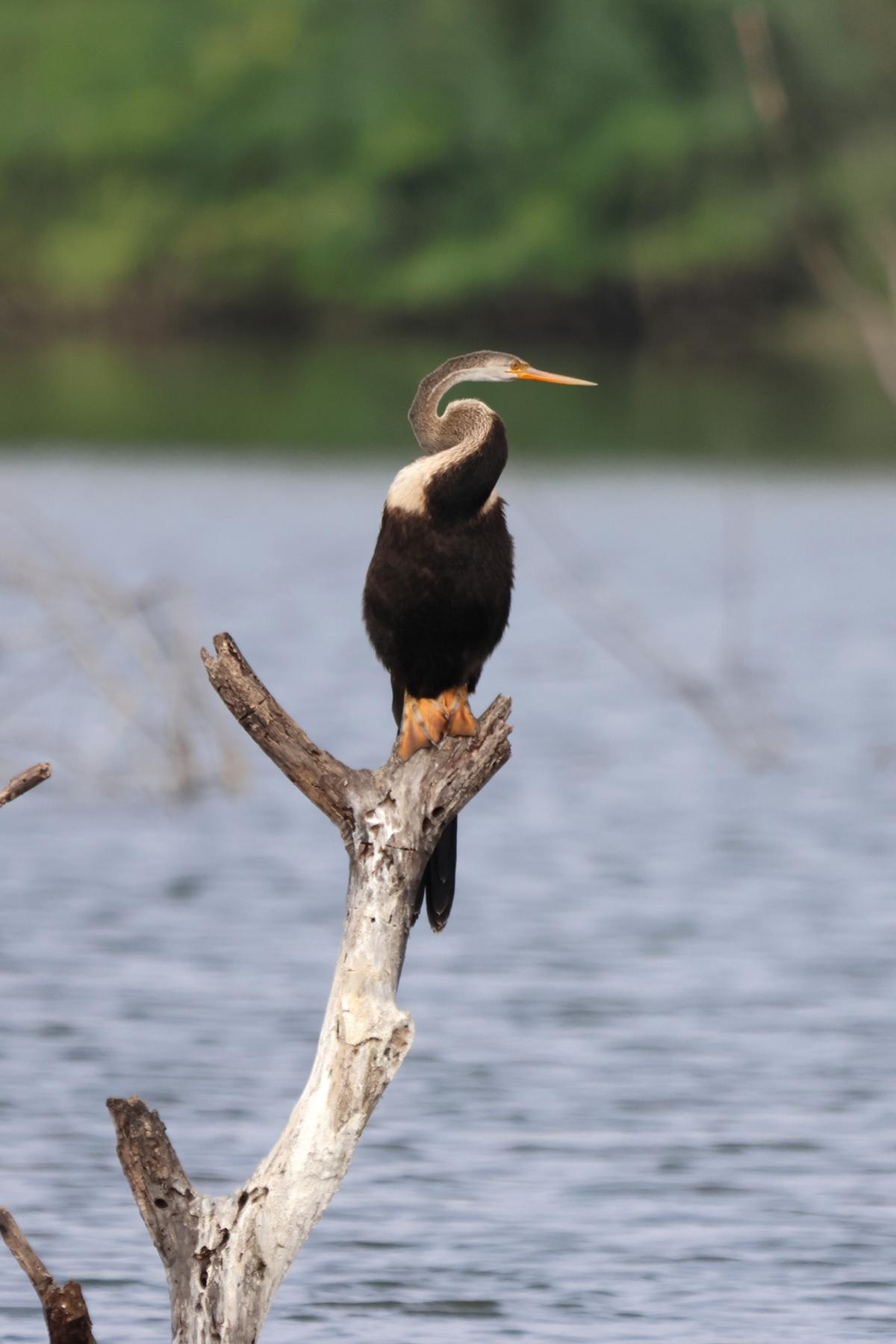
Oriental darter
| Photo Credit:
Kalaiselvan V
Surendhar and his team covered a whopping 52 lakes in Puducherry, Villuppuram, and Cuddalore and enroute for four days, starting January 14, recording 129 species. A birding enthusiast for over a decade, he caught a glimpse of the migratory red-throated flycatcher that comes from the lower Himalayas at Karasur Lake in Puducherry, a well-maintained water-body. “The number of water birds was less. People dump waste in lakes unaware of the presence of domestic and migratory birds. We spotted the Eurasian spoonbill, black-headed ibis, but strangely no pelicans.” Urban birds like crows, mynas, rollers, and black drongos were present in good numbers. While nature education at schools and colleges opens up the world of Nature among students, such bird walks makes them aware of conservation. “For example, they should know about stopover of birds like Pacific golden plover and why we have to ensure that our lakes are clean with abundant greenery for such unique visitor.”
Kalaiselvan V, Salem
Government school teacher, executive member of Salem Ornithological Foundation
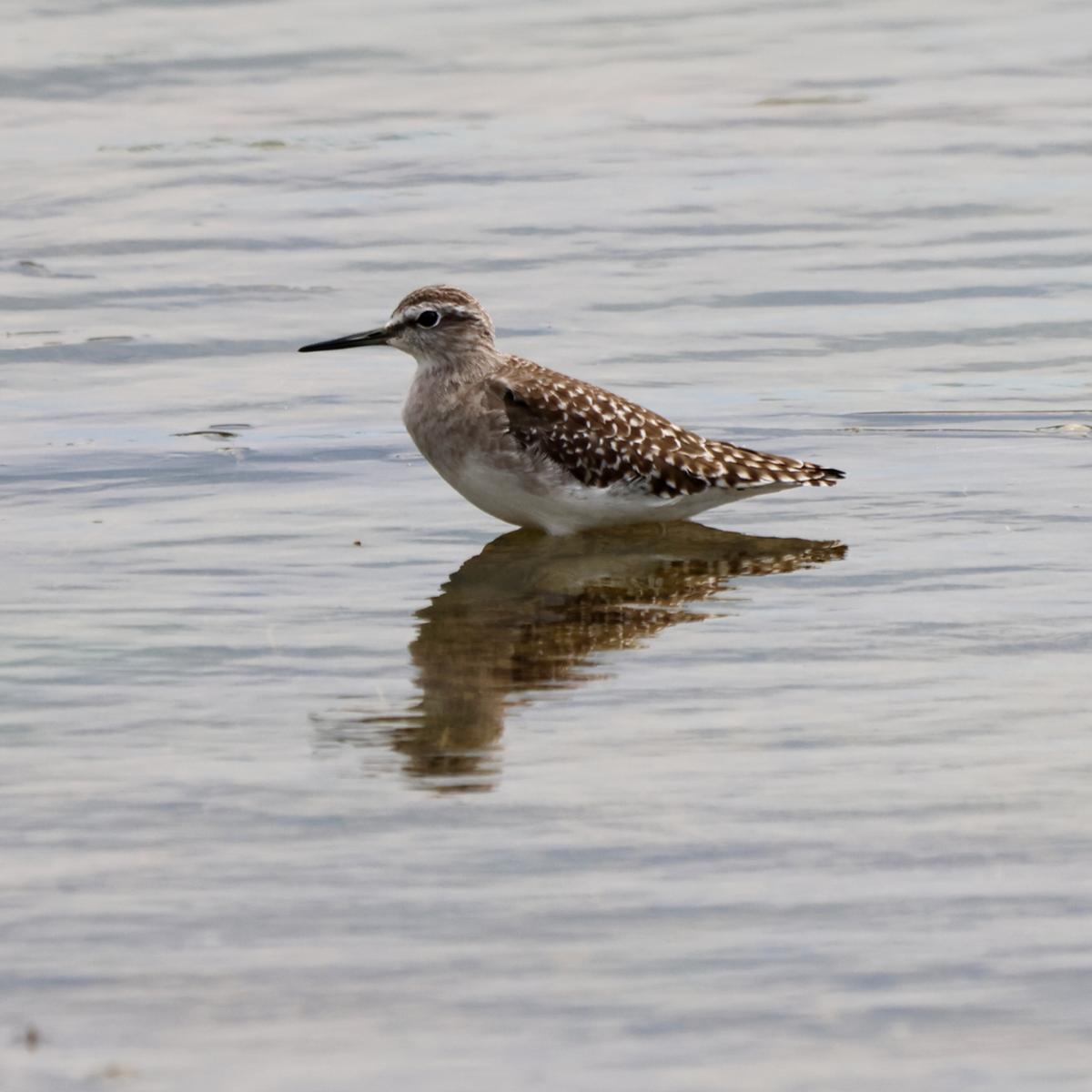
wood sandpiper
| Photo Credit:
Kalaiselvan V
With over a decade’s experience in bird watching, Kalaiselvan travelled 538 kilometres covering 20 blocks in the district for three days and recorded 130 species on ebird. “I saw cattle egrets, egrets, and glossy ibis in good numbers. Along with migratory barn swallows and grey wagtails, we also recorded the white-naped tit in Mettur whose IUCN status is vulnerable. We also spotted the rare Marshall’s iora in the same place. We hold seminars on ornithology in schools and colleges regularly and the results are beginning to show. As many as 50 birders took part this time,” he says adding that Shevaroy Hills in Yercaud is a hotspot for hill birds.
Vinod Sadhasivan, Kanniyakumari
Founder of Kanniyakumari Nature Foundation
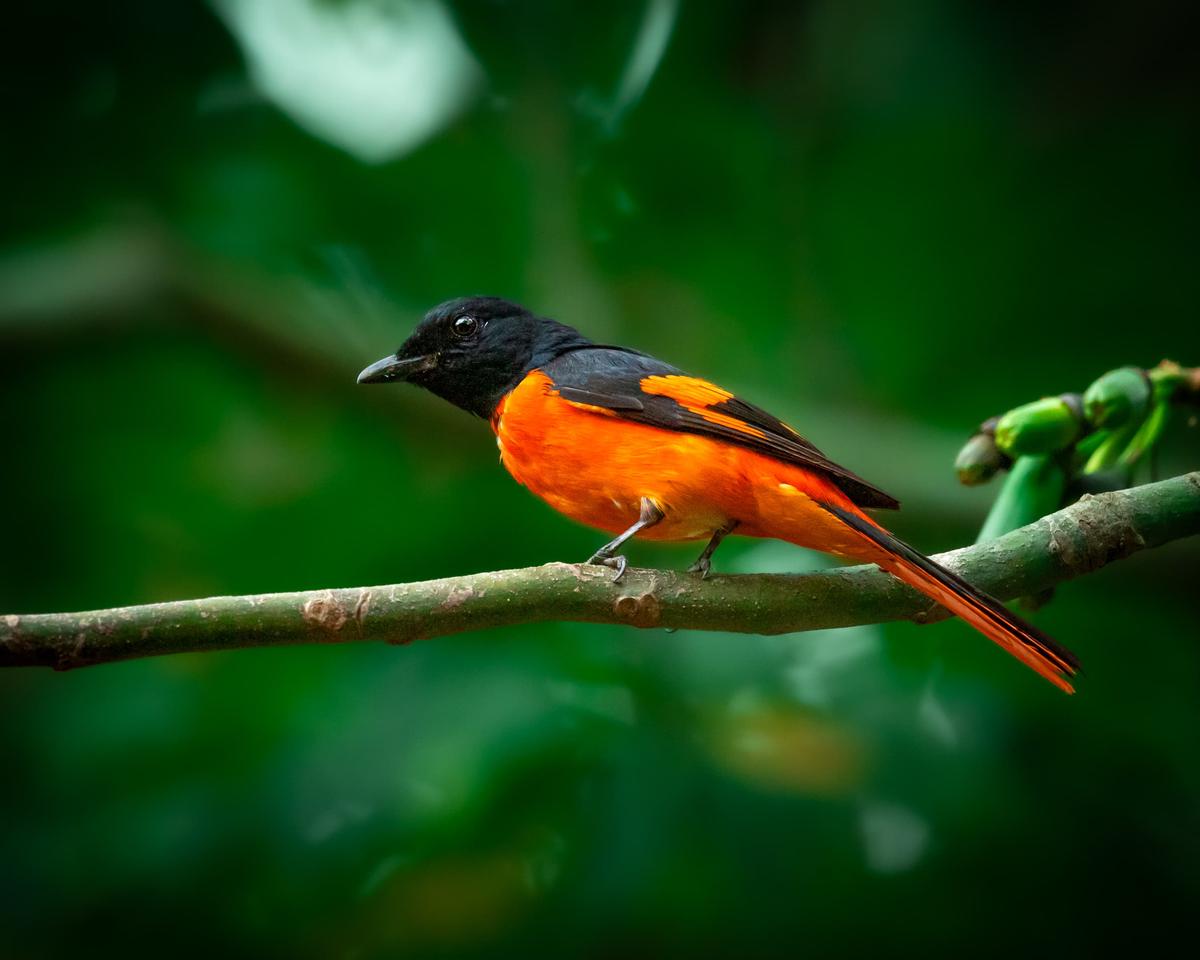
Orange minivet
| Photo Credit:
Vinod Sadhasivan
Vinod works closely in wildlife conservation. A regular at the wildlife census programme of the Forest Department. “I have been into bird watching for 15 years,” he says adding that he played an active role in increasing the number of bird watchers from a mere four to 40 in the last four years in the district. “Our aim is to build a team, spark an interest and create opportunities like Pongal Bird Count to meet and network,” explains Vinod. His team covered wetlands, coasts, water bodies, forest areas and also paid attention to species that have gone missing. “Water birds like northern pintails, and northern shovellers that can be seen in thousands were reduced to a few hundreds. But, we saw the white-bellied sea eagle, a resident bird that can be seen along the coast, in a forested area, which is unusual. This is common along Kerala’s coast as the birds use tall trees for nesting. In Kanniyakumari, coastal areas are urbanised with coconut groves or settlements which may have forced the bird to explore the forest to build a nest.” The team documented resident birds like Asian fairy-blue bird, racket-tailed drongos, Jerdon’s leafbird, orange minivet in good numbers. Among migratory, they spotted blue rock thrush and water birds like stints, marsh and wood sandpipers.

T Eswaramoorthy, Erode
Advocate & birding enthusiast
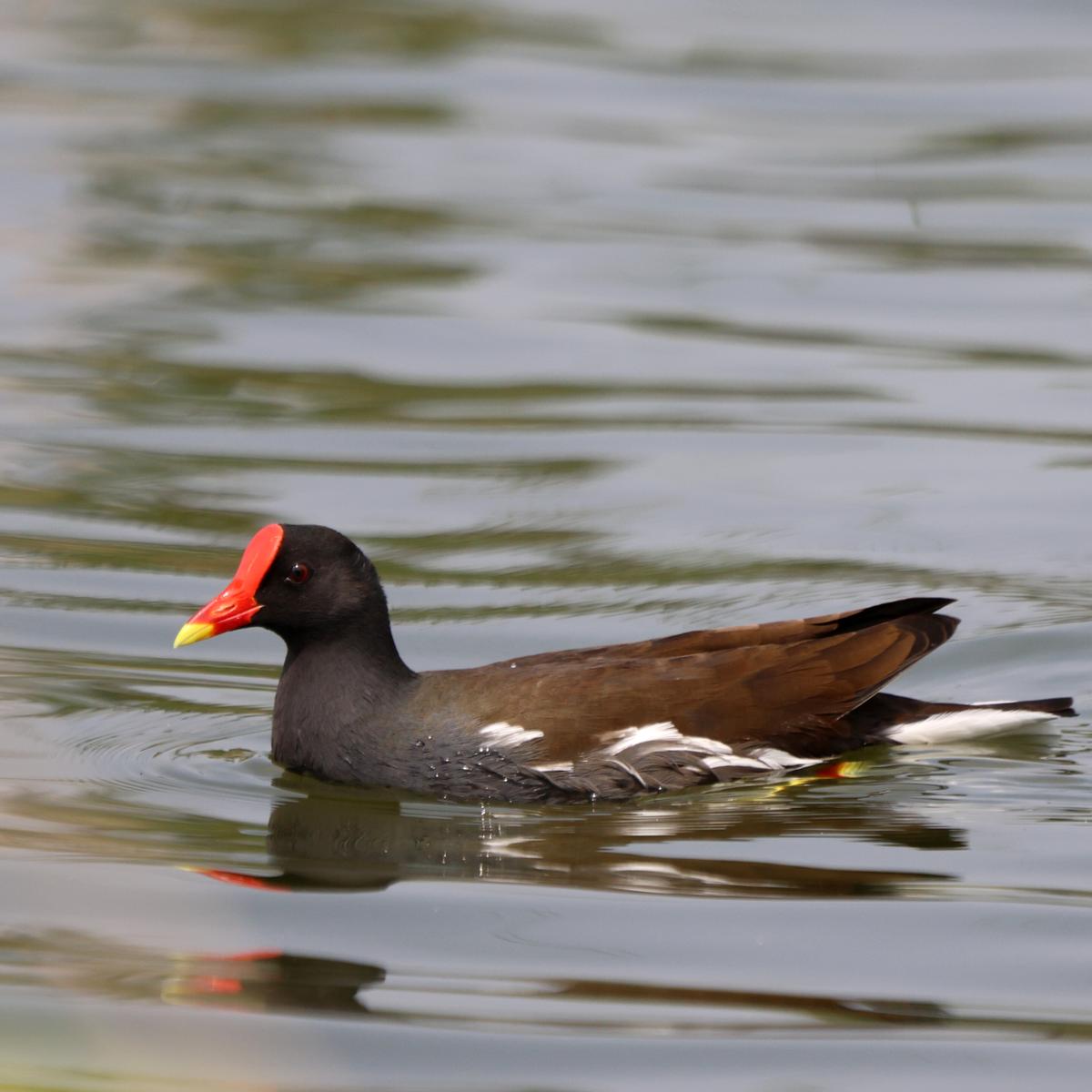
Eurasian moorhen
| Photo Credit:
Kalaiselvan V
For the last eight years, Eswaramoorthy has been documenting not just birds but also flora and wildlife during his travels in the wild. “In 2022, while at Bargur forest, I heard the rasping, rattling calls of the puff-throated babbler. It took me six months and the help of apps like Merlin to identify the bird. I actively contribute data on ebird, a citizen science forum. In three years, I have spotted birds across five states,” he says.
However, this was his first stint with the Pongal Bird Count. However, this was his first stint with the Pongal Bird Count. He followed the course of rivers — Cauvery and Noyyal along Erode, Namakkal, Karur, and Tiruppur, documenting hotspots thriving with biodiversity. “At Solasiramani village in Namakkal, I watched a snake glide through the water to catch its prey — Eurasian moorhen and pheasant-tailed jacana. The birds, sensing danger, took off. I spotted the moorhen’s nest and chicks, a lesser-whistling duck with chicks and also got a peek into pre-historic dolmans site along the Noyyal base in Erode. It was rewarding.”
He uploaded 95 species on ebird and 55 checklists. “This should inspire people. We are talking to students to join us in bird watching,” he says, adding, “Watching pelicans in flight was fascinating.”

Published – January 28, 2025 03:04 pm IST



